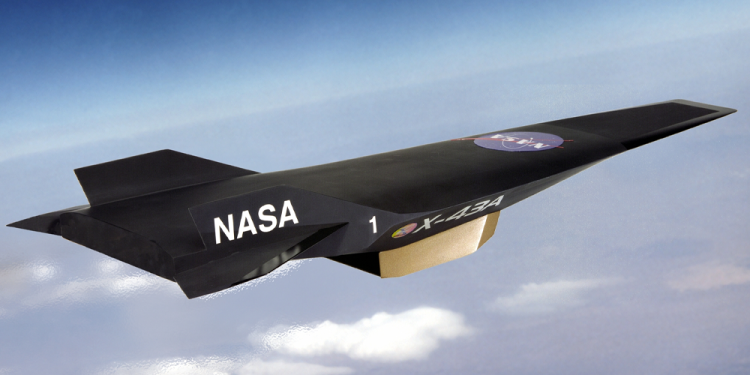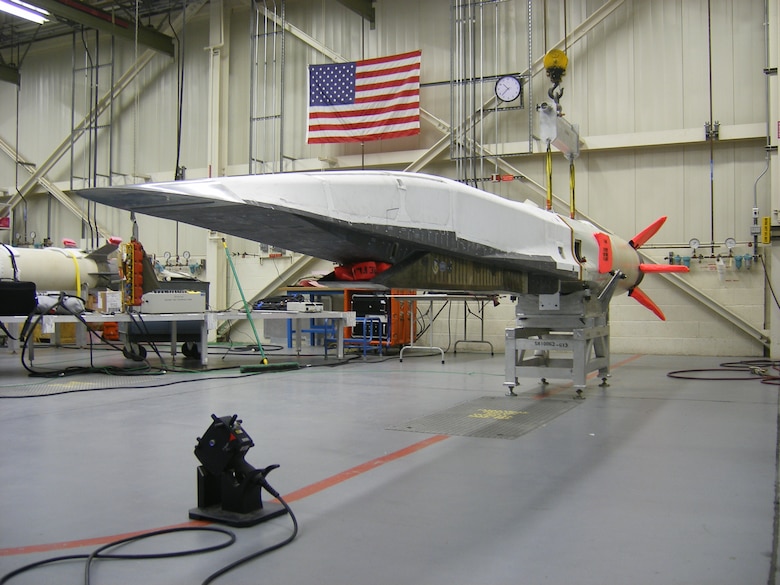The Likely Development Of A Scramjet Space Force One
Posted: April 14, 2020
Updated: April 14, 2020
-
Aging Rockets And Jets Will Make Way For New Propulsion Technology
-
A Scramjet Space Force One May Use Unsymmetrical Dimethylhydrazine
-
Long Duration Orbital Maneuvering Will Require Advanced Ion Thrusters

NASA's Scramjet- Image source: NASA via Wikimedia Commons
Although in some ways quite a pleasing concept you can’t, each time they wish to travel abroad, stick a President atop a rocket. Rockets are inherently dangerous (large fireworks in many regards) and the Secret Service wouldn’t sign off on it. So, you’ll need other systems to both to propel it within the atmosphere and beyond. The most likely development then is of a scramjet Space Force One. Able to bound into orbit it could remain there all but indefinitely or come down anywhere on Earth. It’ll be the communications suite that determines the practicality of the concept itself. With adequate reliable comms, it’s useless. The space tech available at the time, what orbital hardware is around, will set the mission duration capacity. However, it’ll be the propulsion systems that will actually place it on sub-orbital or orbital trajectories. Currently, developments in these technologies point to a scramjet Space Force One being the most likely future Presidential plane. A development of the ramjet, the scramjet is a high-efficiency engine that uses far higher velocities than jets. Using hydrogen or a derivative fuel it uses the kinetic energy of the air to provide massively high speed propulsion. The engine slowing and then reaccelerating air as it is taken in. At such supersonic speeds, a scramjet Space Force One would need to use a constant dynamic pressure path. However, the speeds would be extreme. Currently Air Force One can manage nearly 700mph, a scramjet Space Force One would reach speeds over ten times that.John F Kennedy
- “America has tossed its cap over the wall of space.”
Scramjet Space Force One Would Reach Orbit
A scramjet Space Force One would thrust to supersonic speeds using internal short duration rocket engines. It would then swap to the scramjet to reach such speed as is required to place itself in low earth orbit. Unfortunately, current scramjet engines aren’t quite powerful enough to do that. However, the obvious future developments in the technology will remove that obstacle. So, even at sub-orbital altitudes, the scramjet Air Force One will be impressively fast.
Sally Ride
- “Rocket science is tough, and rockets have a way of failing.”
Nuclear Powered Ion Thrusters Likely Orbital Engines
Ion engines actually date back to the start of the 20th century, 1911 actually, but remain massively complex. NASA built the first in 1959 but the technology is only now maturing enough for use. Using electricity to take advantage of the charge/mass ratio of ions it requires substantially less fuel than chemical reaction thrusters. This weight saving will be invaluable in a scramjet Space Force One. Although the electrical requirements may give rise to a scramjet Space Force One containing a nuclear reactor. The low acceleration performance model of Ion thrusters is a current issue, but they’ll solve that. An orbital vehicle requires relatively little power to change attitude. So more advanced ion thrusters should be sufficient. This may, to those missing their regular bet on sports in the US, sound like science fiction. However, there are already patents on the technologies behind a scramjet Space Force One. Their development of practical specifications is just decades away. Read more about Space Force One We take a look at the probable development of a scramjet Space Force One able to traverse both the atmosphere of Earth and orbit beyond.Related content
Subscribe
0 Comments












